
Vietnam handline yellowfin tuna

Location & History
The Vietnam handline yellowfin tuna fishery was once a fishery that used longline fishing techniques. Longline fishing is essentially a very long (reaching up to 300 km) line with hooks attached all the way along. These lines are placed out to sea over a few days and upon return, fishers remove the animals caught on the hooks. However, this is a highly unsustainable fishing method that catches a lot of non-target species, also known as bycatch and includes dolphins, sharks and turtles. After 2020, the fishery became entirely handline fishing, as part of a project to increase sustainability across the fishery. This method is much more selective, catching only one fish at a time. The tuna industry has been recognized and developed in Vietnam since the 1990s. It has become more and more important by providing an annual export value, income and livelihoods for millions of people in coastal areas. There are several species of tuna living around the Vietnamese waters, including yellowfin, skipjack, albacore, and bigeye.
How is the Tuna Caught?
All the tuna from this fishery is caught using traditional handline methods, where only a single line, with a hook at the end is used per fisher. Fishing trips generally last up to 30 days, and there are typically between 6-to-8 fishers on board.The fishers use small fish as bait in the water to attract the yellowfin tuna to the boat, once a school has been located, and lower their lines into the water waiting for a fish to get hooked. The fishers then haul the tuna onboard the vessel where they are killed and gutted, before being stored on ice and returned to shore for processing.
Non-target species (also known as bycatch) are animals that the fishery doesn’t want to catch, such as dolphins, turtles or sharks. The use of a single hook and line per fisher means that there is very little bycatch, and because fishing takes place at the surface of the ocean, there is virtually no negative impact on different marine habitats.
Unique Features
Around 95% of all yellowfin tuna products from Vietnam are exported across the world, primarily to North America, Japan, Europe and across Asia.
Gallery
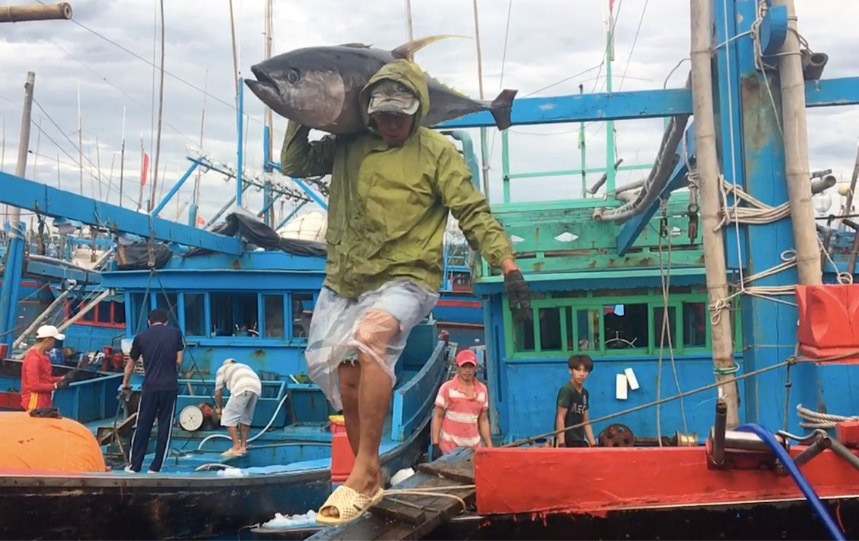
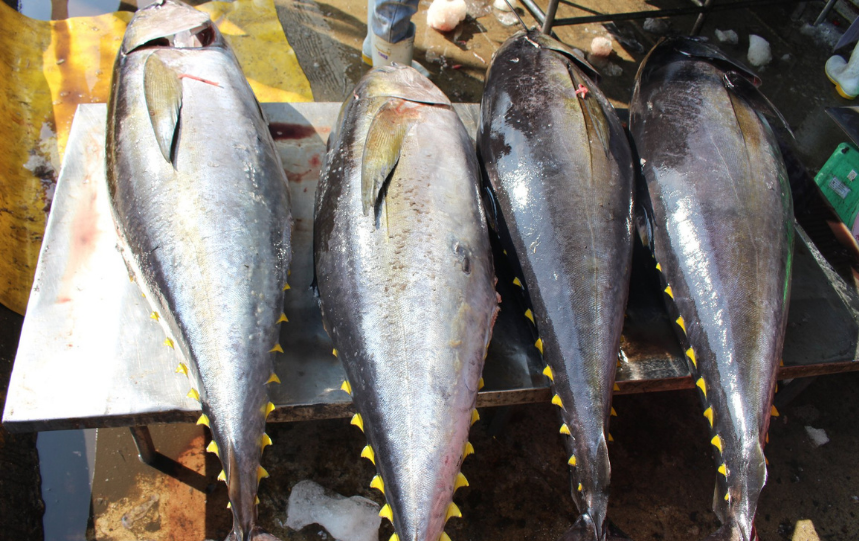
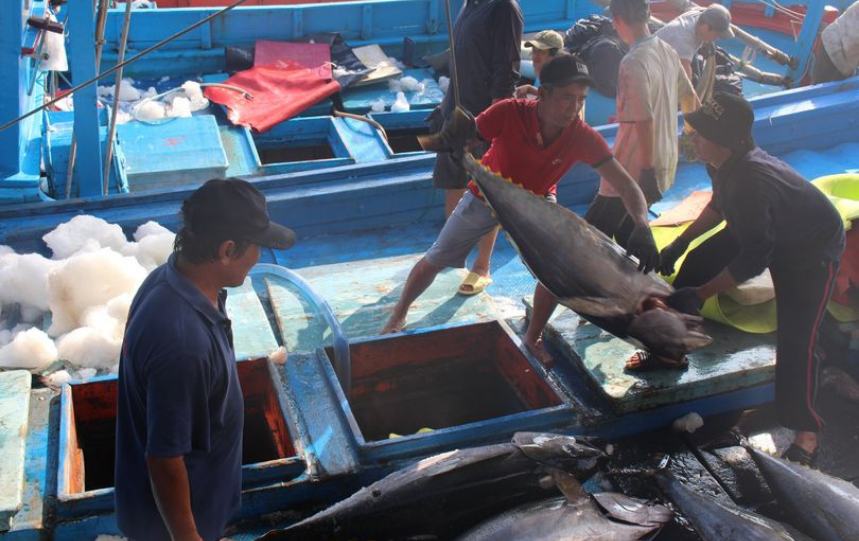
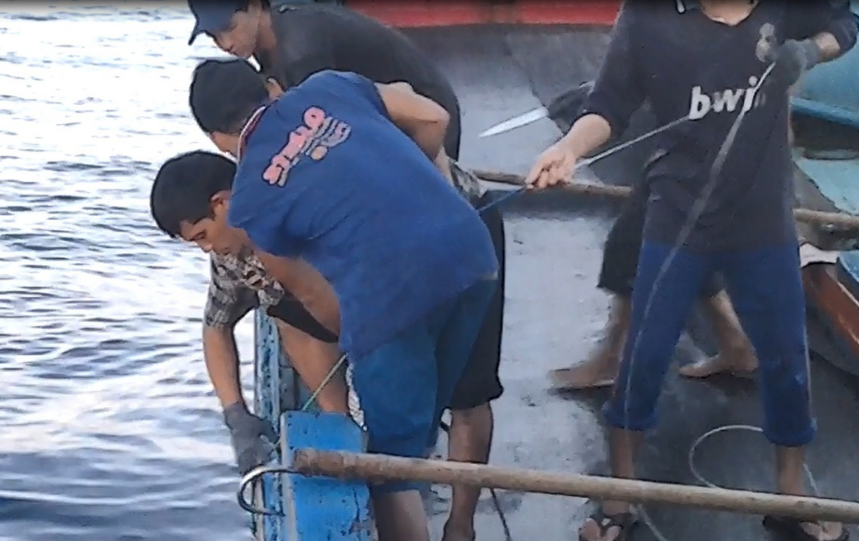
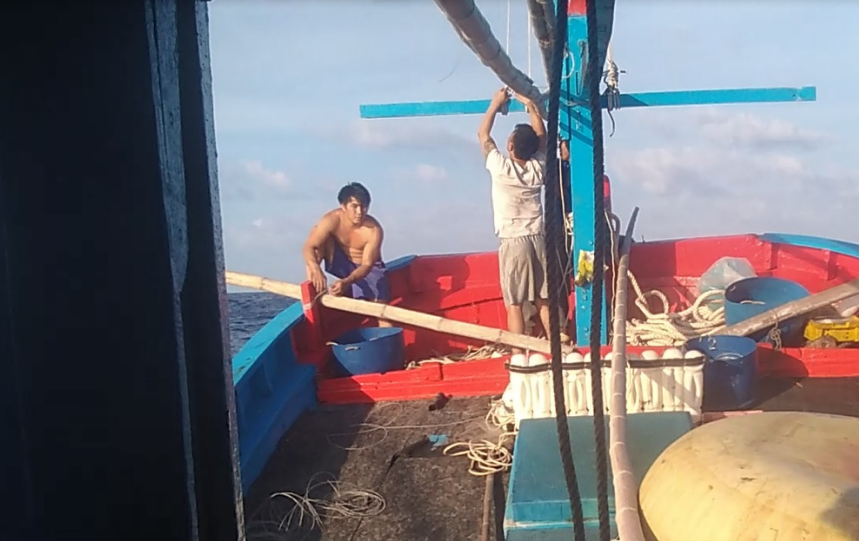

Typical Vessel
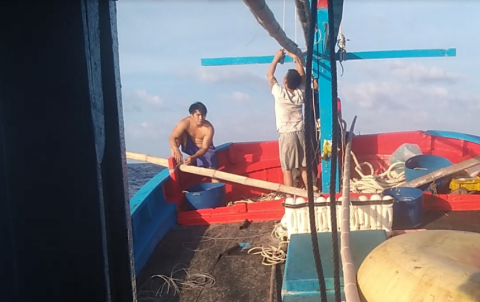
| Item | Value |
|---|---|
| Crew Size | 7 |
| Size Range (m) | 10-32 |
| Hold Capacity | 2 MT |
| Onboard Cold Storage? | Yes |
Fleet Capacity
-
4000t
- Annual Catch Volume (metric tonnes)
-
2000
- Number of Vessels
Target Species
Yellowfin Tuna

Fishing Gear
Handline
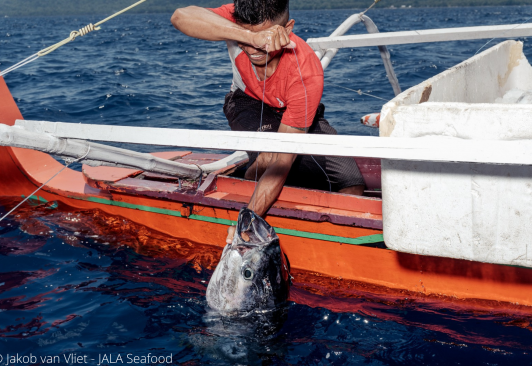
Traceability
Traceability systems are used in food supply chains to track a product from production to consumption. They assist with ensuring that standards and regulations are met throughout the supply chain, which is very important for products that travel across the globe, such as tuna.
Good traceability reduces contamination, disease, and spoilage. In the case of seafood, it also helps to maintain sustainable fish stocks in the oceans so we can keep enjoying tuna for years to come.
Most importantly, traceability provides transparency through the supply chain, allowing all parties including the consumer access to information about the products they are buying.
Fishing & Living
Anova Food US have been working alongside WWF Vietnam to increase the traceability of tuna products through the Fishing & Living program. The program has committed to 100% traceable tuna. As part of this aim, Vietnam's tuna can be tracked all the way back to the specific fishing vessel that it came from, which is currently recorded through paper-based methods but plans are in place to convert to electronic-based methods in the near future.
Find out moreFishery Association
What is an industry association?
Industry associations are responsible for enforcing industry specific standards and regulations to protect employees and companies within that industry. They have a range of responsibilities such as providing industry specific information to businesses and useful resources, engaging in education programs, and supporting businesses so that they can reach and maintain industry standards.
Another important role of an industry association is lobbying governing bodies to take action on issues that are affecting the industry in question.
What is a fishery association?
Fishery associations are generally not-for-profit organisations that represent fisheries in one area of the world. Fishery associations are important for small-scale and artisanal fisheries, to defend their rights in a competitive industry and lobby governments for their support of these fisheries.
These associations ensure fishers are protected as employees in this industry, and that fish stocks are being managed appropriately to ensure the fishers trade will continue and be prosperous. Some associations represent employees throughout the supply chain, from fishers, to processors, to distributors, protecting the workforce from the source to your plate.
VinaTuna
VinaTuna is the national tuna fisheries organisation of Vietnam, based in Nha Trang city, South Central Vietnam. It was established in 2010 to oversee the protection, responsible exploitation, processing and consumption of the country’s tuna fisheries products.
Membership of VinaTuna is voluntary, with core objectives including enhancing the cooperation of its membership to maximise opportunities from funding, technology, legal rights, marketing and fishing activities. It also guides and monitors its members’ compliance with national legal and policy frameworks.
Find out more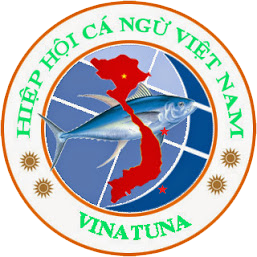

Regional Fisheries Management Organisation
Western and Central Pacific Fisheries Commission (WCPFC)
Regional fisheries management organisations (RFMOs) are international bodies formed to manage fish stocks in an oceanic area. They include several countries with fisheries operating in that area, and some focus on particular species such as tunas. They are established through international agreements and treaties. RFMOs typically collect fishery statistics, assess fish stock conditions, monitor fishery activity and make fishery management decisions.
The Western and Central Pacific Fisheries Commission (WCPFC) was established by the Convention for the Conservation and Management of Highly Migratory Fish Stocks in the Western and Central Pacific Ocean (WCPF Convention). The Commission seeks to manage issues that arise in high-seas fisheries, to prevent overexploitation of highly migratory fish stocks.
Stock Status Reports
Yellowfin Tuna Stock Status
2021-03-25The stock status of a fish species signifies whether a species is 'overexploited', 'fully exploited' or 'underexploited'. Different organisations use different parameters to assign these labels. For example, the Food and Agricultural Organisation of the United Nations (FAO) deems any species to have less than 40% of it’s ‘unfished biomass’ to be overexploited.
The aim of assigning stock status to a species is to ensure that catches are kept at a level where future catches will not be affected, in other words, to maintain a healthy, viable population of fish.
In addition to biomass, spawning potential, catch trend and size-age composition may be used to determine stock status. These are important factors to consider as some species are more resilient than others and have different ecological features. For example, yellowfin tuna have a higher reproduction rate and are typically more resilient than other tuna species.
National Reports
Vietnam
2022-07-01National Reports are formal documents from members of the Tuna Regional Fisheries Management Organisation (tRFMO) in question. Each country that falls within the tRFMO must report on the state of their national fisheries in relation to the requirements of that tRFMO. They are normally presented to the annual Scientific Committee meetings by a credentialed head of delegation - considered national scientists. The tRFMO normally prescribes what the report should entail and how it should be structured, which would also include progress on key resolutions on conservation and management measures, and brief the ongoing scientific research of interest to the tRFMO.
